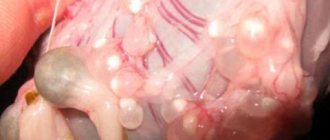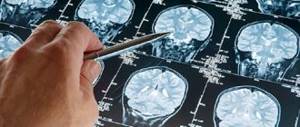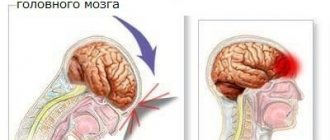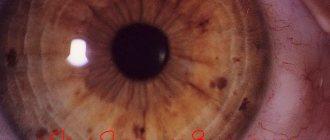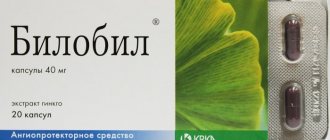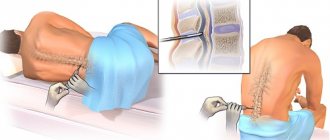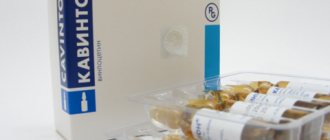Types and causes of vascular dementia
The International Classification of Diseases (10th revision) assigned DM code F01 and identified the following types:
- With acute onset (F01.0). Behavioral disorders occur quickly, within 1-3 months after the first or subsequent strokes. May be due to hemorrhage, cerebrovascular thrombosis or embolism.
- Multi-infarction (F01.1). Mostly cortical. Signs appear over 3-6 months, gradually, usually followed by ischemic episodes. In this case, heart attacks seem to accumulate in certain parts of the brain.
- Subcortical (F01.2). Doctors call it subcortical. With this type of disorder, most of the damage affects the deep parts of the white matter.
- Mixed cortical and subcortical (F01.3).
- Unspecified (F01.9).
- Other (F01.8). This may include dementia after a stroke.
However, it is impossible to talk about a clear division into cortical (cortical) and subcortical, because in the later stages of diabetes it affects all areas of the brain.
Brain diseases are considered the most dangerous diseases, since most often their consequences are irreversible. So, a subdural hematoma of the brain is extremely severe, which usually has a fairly large size.
Its consequences can be post-traumatic encephalopathy and disability. Read more…
Stages of vascular dementia
Dementia is preceded by 3 stages:
- The emergence of risk factors for development. For example, a predisposition to vascular diseases.
- Ischemic damage in the initial stage. At this stage, brain lesions can be diagnosed, however, they do not appear externally. In this case, leukoaraiosis and “silent” heart attacks are observed.
- Beginning of the symptomatic stage. It is difficult to make a diagnosis at this stage, since the lesions are small and do not significantly affect the behavior and perception of the patient. Disorders can only be detected through neuropsychological testing.
The history of the development of vascular dementia includes several stages and proceeds as follows:
- The initial stage or appearance of moderate cognitive impairment of vascular origin.
- Clinical diagnosis of diabetes. At this stage, the signs of dementia are already clearly expressed, the patient behaves either aggressively or apathetically, and memory lapses appear.
- Severe or severe diabetes. The patient needs constant monitoring and is completely dependent on others.
- Death. In general, death does not occur due to dementia (with rare exceptions such as accidents), but as a consequence of a heart attack or stroke.
Treatment and rehabilitation
There is no universal approach to the treatment of vascular dementia. The medical community still does not have a consensus on the causes of the disease. Considering that the disease manifests itself in the form of several obvious symptoms, a differentiated approach is used, which includes taking measures aimed at:
- preventing (or slowing down) disease progression;
- removal (or reduction) of cognitive symptoms responsible for quality of life;
- therapeutic recovery.
In case of problems with small vessels of the brain, doctors at the Panacea clinic first of all try to normalize blood pressure. At the same time, its excessive decrease can lead to a decrease in mnestic-intellectual functions. To prevent cerebral infarctions, patients are prescribed antiplatelet agents—medicines that prevent platelets from sticking together. They are given along with anticoagulants to patients with vascular dementia to prevent embolism. Doctors try to solve cognitive problems (or alleviate their intensity) with the help of:
- nootropics;
- cerebrolysin and its analogues;
- calcium channel antagonists.
The response to treatment is individual for each patient with vascular dementia. If indicated, drug therapy should be reconsidered. This is done in order to reduce the toxic effects of drugs on the body. Also, such patients need prevention of aspiration, urinary and respiratory infections. Hygiene procedures are important.
Order a visit from a gerontologist. Experienced doctors. Treatment in a hospital or at home. 24-hour service in Moscow and the region. Professional, anonymous, safe.
- Online consultations about dementia
- Factors that provoke dementia
- Dementia with Lewy bodies
- Psychoses in old age
- Age-related personality changes
- Treatment of depression in the elderly
- Is it possible to stop senile dementia?
- Treatment of senile dementia
- Dementia treatment
- Symptoms of Alzheimer's disease
- Drug therapy for patients with dementia
- Diagnosis of dementia
- Manifestation of Alzheimer's disease
- Types of dementia
- Parkinson's disease
- Hallucinations and delusions
- Vascular dementia
- Psychodiagnostics of elderly patients
- Treatment options for Parkinson's disease
- Early diagnosis of mental disorders in older people
- Senile aggression: why does it occur, what to do with it?
- Alcoholic dementia
- Mental disorders in old age
- Pick's disease
Symptoms of vascular dementia
Since dementia is not a single disease, but a syndrome that affects a person's behavior in different ways, it is difficult to indicate the exact changes that accompany it.
But we can talk about the symptoms that occur in most cases, as well as the most basic signs.
According to statistics, the most common symptoms of vascular dementia are:
- Epileptic seizures (20-34% depending on the disease).
- Walking disorders (30-95%). This includes unsteadiness, slight limp, shuffling steps and similar signs.
- Urinary disorders (almost 90%).
- Deterioration of cognitive functions, for example, memory, orientation, attention (100%).
- Decrease in physical functions, without deterioration in motor skills (100%).
Other signs depend on the general picture of the disease, the type and stage of development of dementia.
initial stage
Symptoms at the initial stage are characteristic of many diseases and are therefore difficult to distinguish.
These include:
- The appearance of neurosis-like disorders (lethargy, apathy, irritability);
- Absent-mindedness and inattention.
- The appearance of insomnia, nightmares and other sleep disorders.
- Depression.
- Disturbances in orientation outside the home.
- Emotional instability, sudden mood swings.
Middle stage
At this stage, symptoms become noticeable and easily diagnosed:
- Mood swings become more severe. Aggression appears, giving way to deep apathy.
- Short-term memory lapses.
- Disorientation within the home.
- Difficulties in communication associated with forgetfulness of even frequently used words and reluctance to make contact.
- Violations of physical functions, for example, the vestibular apparatus, and, as a consequence, the need for self-care.
Heavy stage
At the last stage, all previous symptoms become extreme:
- Lost in space and time.
- Delusions and hallucinations.
- Memory losses. This also applies to close relatives, events that happened a few minutes ago.
- Unreasonable aggression.
- Difficulty moving, including the inability to get out of bed.
- The need for constant self-care.
Often, expectant mothers suffer from dizziness in the early stages of pregnancy. You will find out why this happens from the article.
This section will tell you what the disease is - reactive meningitis and why it is dangerous.
You can find information about emergency assistance during a vegetative crisis at the link https://gidmed.com/bolezni-nevrologii/vegetososudistaja-distonija/vegetativnyj-kriz.html.
Forms of dementia
Depending on the clinical manifestations, this disease can be of two types:
- Lacunar, in which focal damage occurs in the structures responsible for intelligence and short-term memory. The latter suffers especially. That is why this form of dementia has another name – dysmnestic dementia. The emotional sphere suffers to a lesser extent. A typical example of a lacunar type is the initial stage of Alzheimer's disease;
- Total, which is accompanied by a complete collapse of personality. The frontal lobes of the cerebral cortex experience ischemic and atrophic effects. There is a pronounced defect in the intellectual-cognitive link, as well as in the emotional-volitional sphere. Spiritual values become unimportant to the patient, his circle of vital interests narrows. Over time, complete social collapse occurs.
Signs of diabetes
In addition to the main symptoms, there are signs by which the disease can be more accurately determined.
For vascular dementia this is:
- Short-term recovery of cognitive functions. The reasons for this effect are not fully understood. Most often occurs during intellectual stress. The patient's condition may improve almost to a normal level, but the vascular dementia itself will not go away.
- Smooth development.
It is the smooth and slow development of diabetes that prevents its diagnosis, especially in the elderly. Relatives of patients often admit that they noticed minor changes, but paid attention to them when it was too late. After a single stroke, the behavior of a patient with dementia may not change at all until the middle stage. Acute development of diabetes occurs only in 20-38% of cases. - Abdominal or trauma surgeries, as well as coronary artery bypass surgery, precede symptoms.
In patients, especially the elderly, new vascular lesions appear: - After cerebral angiography in 15-26% of cases. — After operations on the carotid arteries in 17-54%. — After heart surgery and other cardiac surgeries 31-48%.
Prevention of dementia
To avoid dementia, follow these rules:
- limit your intake of fatty foods;
- consume foods rich in vitamins; take multivitamins in spring and fall;
- promptly treat chronic diseases complicated by dementia;
- do not abuse alcohol, do not smoke;
- systematically train attention and memory;
- lead a healthy lifestyle.
Diagnosis of vascular dementia
Diagnostics of diabetes is carried out by a doctor based on the above signs and symptoms.
The following can be used to make a diagnosis:
- NINDS-AIREN Working Group Criteria
- International classification of diseases in the 10th revision.
- ADDTC criteria.
- DSM-IV criteria.
- Khachinsky ischemic scale.
It all depends on the training of the specialist and the theories he follows. In fact, they differ only slightly, and at the medium and severe stages they practically repeat each other.
If the patient has significant neurological symptoms or cerebrovascular disease, a thorough evaluation for stroke is necessary.
During diagnosis, CT and MRI (magnetic resonance imaging) may be prescribed to identify:
- multiple heart attacks;
- lacunar cysts;
- white matter damage.
Diagnosis of dementia
A preliminary diagnosis is made based on the patient’s complaints and after a general examination. During the examination, the doctor must identify disorders of the psyche, speech, behavior, check the activity of the tendons and the appearance of pathological reflexes.
The specialist conducts special tests to determine the degree of dysfunction of the functional activity of the brain. Further, to make a clinical diagnosis, objective laboratory and instrumental diagnostic data are required.
Laboratory research is quite informative; the doctor will primarily be interested in a biochemical blood test.
Here, with the development of atherosclerotic lesions, an increase in the concentration of total cholesterol, low and very low density lipoproteins, triglycerides and a decrease in high density lipoproteins are usually determined. In case of hypertension, microalbumineria can be observed in the urine.
For vascular dementia, the following types of instrumental examination are necessary:
- 24-hour blood pressure monitoring;
- electrocardiography;
- Doppler ultrasound of cerebral vessels;
- magnetic resonance or computed tomography of the brain;
- electroencephalography;
- rheoencephalography.
The proposed methods make it possible to visualize structural disorders of nervous tissue, determine changes in the activity of one or another area of the brain, find the cause of vascular dementia and carry out differential diagnosis with other types of dementia.
If pathology is present, consultation with a neurologist, cardiologist, psychiatrist and sometimes an endocrinologist is necessary.
Treatment of vascular dementia
Vascular dementia most often cannot be cured, since the changes in the brain are irreversible. But it is possible to overcome changes that are not functional in nature (do not affect physical and mental abilities).
The need for treatment is clearly indicated by a graph showing the effect of therapy:
It should be noted here that the type of therapy can only be prescribed by a doctor. Measures taken independently can worsen the patient’s condition and literally lead him to the grave. If you prefer any specific treatment method, discuss the issue with your specialist before using it.
Causes of dementia
Factors in the development of the disease are heterogeneous. The immediate provocateur is always the same - a malnutrition of the brain.
If we talk about the culprits in more detail:
- Atherosclerosis. Deposition of cholesterol plaques on the walls of the arteries and blockage of the lumen of the structure or chronic narrowing as a result of persistent spasm (often occurs in smokers and drinkers). The main and most common reason among all.
- Vasculitis. Inflammatory processes in the blood vessels of the brain.
- Damage to the vertebral arteries. Hypoplasia (underdevelopment), vertebrobasilar insufficiency (compression of the vessel as a result of osteochondrosis, or hernia of the cervical spine).
- Thrombosis and other similar pathologies.
- Suffered a stroke. The only condition that leads to pronounced disturbances here and now. This is understandable given the rapid breakdown of brain cells in a certain area.
- Hypertonic disease. Over a period of several decades or less, depends on the rate of progression.
- Chronic heart failure. In this case, the reason is the low contractility of the myocardium. The organ cannot pump blood sufficiently; the cerebral tissues do not receive enough nutrition and oxygen.
There are other reasons, but their share is negligible.
According to statistics, vascular dementia most often develops in patients over 55 years of age. There are exceptions. The disorder has no gender characteristics.
Among the total number of types of dementia, vascular dementia makes up about 10%.
Identifying the causes is required to prescribe appropriate treatment.
Treatment methods
It is a mistake to treat dementia as a disease, since dementia is a syndrome that includes several diverse symptoms. The easiest way to treat dementia is while still healthy, trying to prevent dementia.
But despite this, there are several treatment methods that are used in combination:
- Medication;
- Preventative;
- Folk remedies.
Drug treatment
The effectiveness of this method has not been fully proven. However, careful studies have been carried out on some drugs and it has been possible to confirm the improvement in the condition of patients with dementia.
In general, drug treatment helps reduce risk factors for stroke.
For this purpose it is used in small doses:
- Warfarin;
- aspirin;
- ticlopidine;
- cloppdogrel.
The remaining medications are aimed at partially eliminating the patient’s symptoms.
So, to improve cognitive (intellectual) abilities, a doctor may prescribe:
- Pentoxfylline;
- memantine;
- cholinesterase inhibitors;
- pentoxpphylline.
In cases of depression and post-stroke anxiety, antidepressants may be prescribed. And when acute psychosis appears, antipsychotics are prescribed.
If the patient has been diagnosed with post-stroke mania (and it is confirmed that its cause is dementia), then serious medications will be required, for example:
- Lithium;
- carbamazepine;
- valproic acid;
- gabapeptin.
Degree of severity (stages)
The severity of the condition of patients with vascular dementia can be assessed depending on the stage at which their disease is. In this case, the pathology is classified into 2 types - the first takes into account the mechanisms that triggered the process, and the second the clinical condition of the patients.
Previous stages:
- Presence of risk factors for dementia. This may be a hereditary predisposition or a history of stroke;
- Ischemic processes in the initial stages of development. Although this stage can be diagnosed, no symptoms will be observed;
- The first appearance of signs of pathology.
Depending on the clinic, vascular dementia is divided into the following degrees of severity:
- Mild, in which performance and social activity are clearly reduced. Such patients can lead an independent life, their intellectual capabilities are not greatly impaired;
- Average, with limited ability to work. Patients need care. They have reduced intelligence and attention;
- Severe, in which patients have no social adaptation left. They are not even able to observe the rules of personal hygiene. Not only the intellect suffers, but also the motor sphere. In such people, “vascular parkinsonism” is identified, since the symptoms acquire common features with this disease. Possible paralysis.
Prevention and prognosis for vascular dementia
Prevention of vascular dementia involves the prevention of cardiovascular diseases. But it often happens that a person finds out about this possibility too late, when dementia has reached the middle stage.
In any case, this is not a reason to abandon preventive measures, since in most cases, patients get better if they follow these recommendations:
- Quitting alcohol and smoking.
- Refusal of fatty foods.
- Daily physical activity. There is no need to make a bodybuilder out of your grandmother, but even she can devote 2 times 5-10 minutes to a light warm-up.
- Daily intellectual loads. This includes crossword puzzles, reading, memory exercises and the like.
- Control blood pressure and cholesterol levels.
Care and medicines
It is impossible to completely get rid of senile dementia; the disease cannot be completely cured. Fortunately, any stage of development of the pathological process can be stabilized and not given a chance to transition to the most severe degree.
At the onset of the disease, the patient is prescribed antidepressants to help cope with depression and apathy.
Taking sedatives leads to stabilization of a person’s emotional background. In the first stage, care is important; you should work with your relative and pay more attention to exercises aimed at maintaining memory and mental activity.
The transition from the onset of the disease to a moderate stage can take from several months to a year and a half: it depends on the quality of care.
In the second degree of the disease, it is advisable to use drugs that improve intercellular metabolic processes and protect brain neurons from the negative influence of inhibitory factors.
The patient begins to need outside help: he needs help maintaining personal hygiene and performing basic tasks around the house.
Elderly people require attention from loved ones, who must support and not allow their intellectual abilities to weaken.
You should do simple work together and put an active position first.
It is important to remember that the duration of the intervals between stages is influenced by many factors that directly depend on the care of the patient: the development of the disease can be slowed down with proper care. A severe form of the disease requires constant use of medications, the action of which is aimed at reducing the risk of concomitant diseases and emergency conditions
A severe form of the disease requires constant use of medications, the action of which is aimed at reducing the risk of concomitant diseases and emergency conditions.
It is worth taking medications that improve the transmission of nerve impulses. The patient requires constant monitoring aimed at correcting nutrition (through diet it is necessary to reduce cholesterol levels), maintaining physical activity (helps normalize blood pressure and oxygen saturation of tissues).
It should be remembered that all medications used for the disease must be taken as prescribed by the attending physician, who draws conclusions based on the patient’s condition.
Folk remedies
The effectiveness of folk remedies has also not been proven, however, in rare cases, patients may feel better when using some of them, for example:
- Turmeric. Can be added to dishes as a seasoning.
- Elecampane.
- A decoction of Irish moss and flaxseed. Take 1 tbsp. spoon of each and boil in 0.5 liters of water for 20 minutes.
- A preparation from the Ginkgo biloba plant.
Muscular dystrophy can develop at any age, but if we talk about early childhood, then we are talking about Duchenne myopathy. Learn more about this disease.
Headache may be a symptom of the development of cervical osteochondrosis. Effective prevention and treatment measures are here.



